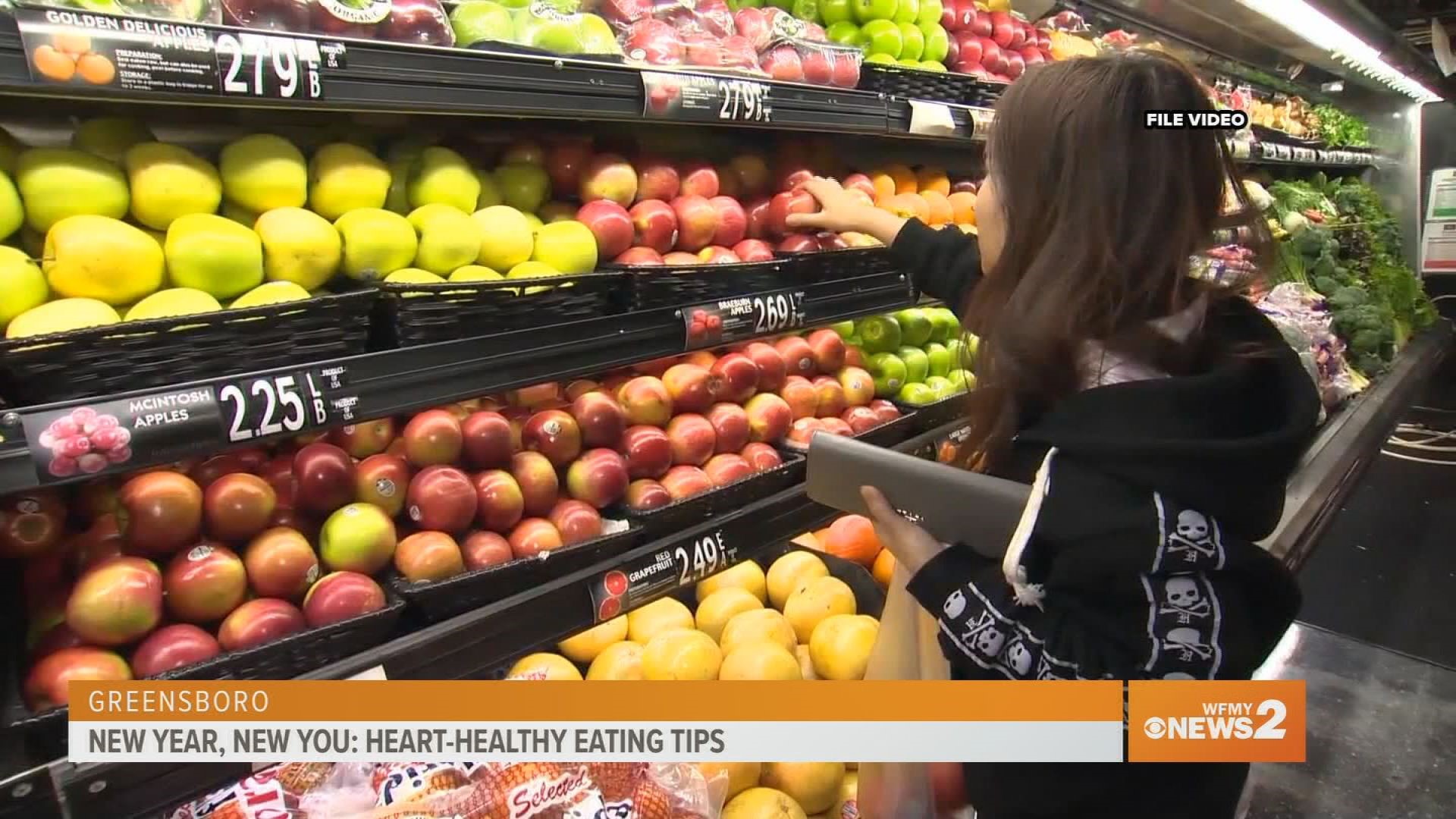GREENSBORO, N.C. — Many Americans are making the resolution to adopt healthy habits for 2021. A recent survey by Statista shows 42 percent of adults want to eat healthier. Healthy eating starts with healthy food choices. When you're shopping online or in-person at the grocery store, make sure you're purchasing healthy options.
The first step is reading the food nutrition label, even for so-called "healthier" foods. You should choose food or drink items with the lowest amounts of sodium, saturated fat, trans fat and added sugars.
When you’re grocery shopping for healthier food or drink options, you should also look for the "Heart-Check" mark to easily identify foods that can be part of an overall healthy eating plan. When it’s on the label, you know the product has been certified by the American Heart Association to meet specific science-based nutrition requirements. The Heart-Check is easy to spot and takes some of the guesswork out of comparing Nutrition Facts label information.
“The Heart-Check mark means the food or drink product has been certified heart healthy by the American Heart Association,” said Jennifer Lawson, Executive Director of the American Heart Association. “These brands, products, and foods go through a rigorous testing by our scientists to say that ‘Yes, it is heart healthy.’ So, what this means is that they have lower sodium. There's not much added sugar, they’re low in fat. So, when you find that heart check mark, it is like the green light that says ‘Yep, put it in your cart. It's okay to eat this.”
Once you reach the produce section, make sure you pick only fresh fruits and vegetables. If fresh isn't available, health experts say, you should choose frozen, canned, or dried produce packed in water, light syrup, or its own juice.
You should also choose whole-grain instead of regular grain foods. That includes whole-wheat bread, crackers, cereals, tortillas, pasta and other food options. When it comes to proteins, the American Heart Association recommends choosing nonfried fish, shellfish, poultry without the skin, and trimmed lean meats, no more than 5.5 ounces, cooked, per day.
"The American Heart Association recommends, in general, lowering your consumption of red meats,” Lawson said. “So, that means your beef, pork, and lamb. The reason for this is they have more saturated fat. So, think of saturated fat as your bad fat. They have more saturated fat than your chicken, fish, turkey, and vegetable protein. So, saturated and trans-fat can raise your bad cholesterol and make heart disease worse. So, that's one of our main recommendations.”
Some other heart-healthy tips include planning ahead of time before grocery shopping. You should make a shopping list to help you choose healthy options - and get in and out of the store faster. For more heart-healthy eating tips, visit the American Heart Association website.

